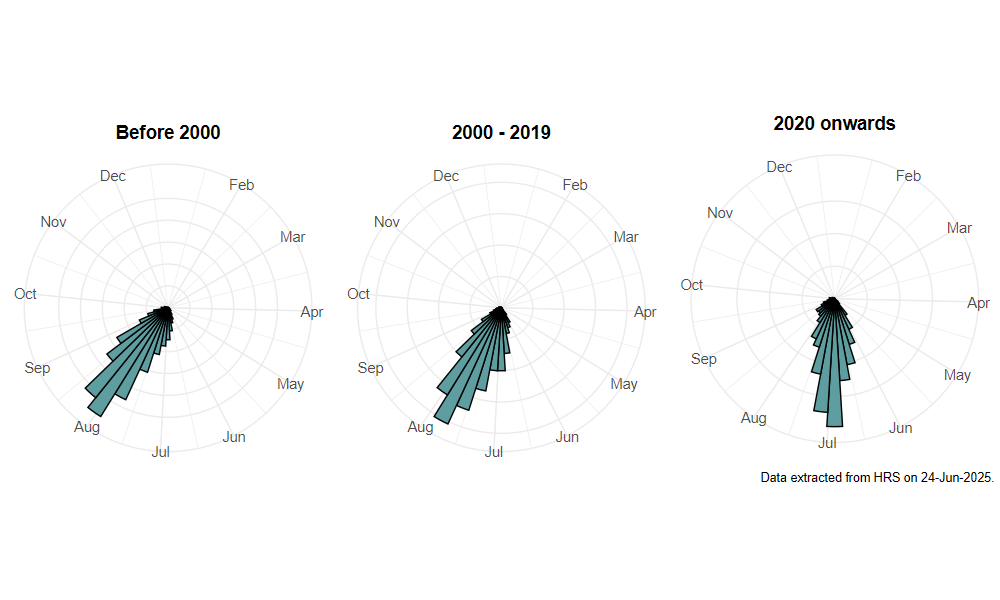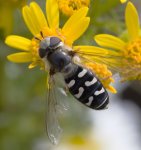Scaeva pyrastri (Linnaeus, 1758)
Identification
Identification difficulty = 1. ![]()
![]() according to Ball & Morris, 20241
according to Ball & Morris, 20241
Biology
The larva feeds on a wide range of ground layer and (less frequently) arboreal aphids. Adults are often seen visiting flowers such as white umbels, and thistles Cirsium and Carduus spp. This is a migrant which reaches Britain around June from southern and central Europe, breeding here to give a generation in late summer. Although it is known to overwinter in central Europe, there is little evidence of this from western Europe suggesting that its annual occurrence is totally dependent on immigration (Speight, 2017)2. In Ireland and western Scotland, the earliest records are in July, suggesting that it is does not usually manage to breed in these areas.
Flight period
The following plots show the number of unique records per week excluding those reported to be of immature stages.

Status
A migrant which may breed locally following early immigration of adults, but does not appear to maintain a permanent, resident population in the British Isles.
Distribution
Widespread in the lowlands of the southern half of Britain. In northern England and southern Scotland records are noticeably clustered along the east coast, as one might expect for a migrant species. It seems to be scarce in north and west Scotland, although it is recorded in Shetland. The numbers of records received vary greatly between years.

Trends
The following plots show the Frescalo TFactor vs year and a map of the rescaled frequency (all records) for the species.
-
Ball, S., & Morris, R. (2024). Hoverflies of Britain and Ireland. WILDGuides (3rd ed.). Oxford: Princeton University Press. ↩
-
Speight, M. (2017). Species accounts of European Syrphidae ( No. 97). yrph the Net, the database of European Syrphidae (Diptera) (p. 294). Dublin: Syrph the Net publications. Retrieved from https://pollinators.ie/wordpress/wp-content/uploads/2018/05/StN-2017-Species-Accounts.pdf ↩
